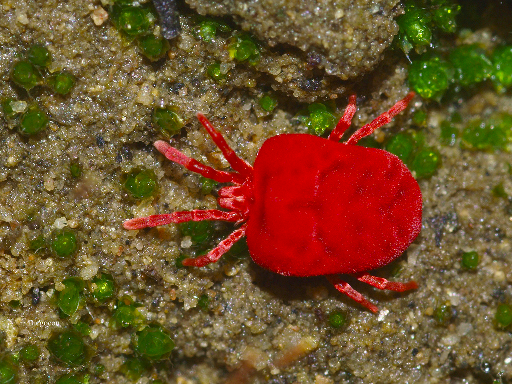Chiggers are tiny little mites related to spiders and ticks that will leave you ready to claw your skin off should you encounter them. Adult chiggers are about 1/20th of an inch long and look like a red speck. While the adults won’t feed on you, seeing them indicates the presence of their microscopic parasitic larvae that will feed on you.

Where are they are located?
Chiggers like to spend their time in moist soil, often near edges of stream banks, yards, parks, or in the shores of marshes. When the larvae hatch they climb into plants or tall grasses and wait for a host such as mammals, reptiles, birds, and some amphibians. When a potential host brushes against the hiding place of choice, the larvae hops on, finds a place to attach and begins feeding. Because the larvae are not visible to the naked eye, you won’t know they have attached until you begin itching like crazy a few hours after it has started feeding. On the bright side, the bites will not harm you aside from the itchy reaction that is similar to a mosquito bite but smaller and more intense.
While Chiggers most likely won’t enter your home on their own, they can infest inanimate objects like a blanket or pillow left on the ground if they are brought in on your clothing or skin.
How to avoid becoming a host
- Wear pants that are tucked into boots, and long sleeve shirts when hiking or camping
- Avoid walking through brush, fields that have not been mowed, or any other overgrown areas
- Apply insect repellent (the ones with DEET work the best)
- Bathe as soon as you come indoors if you were in areas that may have chiggers
- Thoroughly rub your skin with a towel if you are not able to bathe
- Wash clothing after coming inside from a potentially infested area
If you experience chigger bites, treat them the same way you would treat a mosquito bite and try not to scratch too much! While Cooper does not have a specific service for chiggers, we can treat them as we would ticks upon request.

